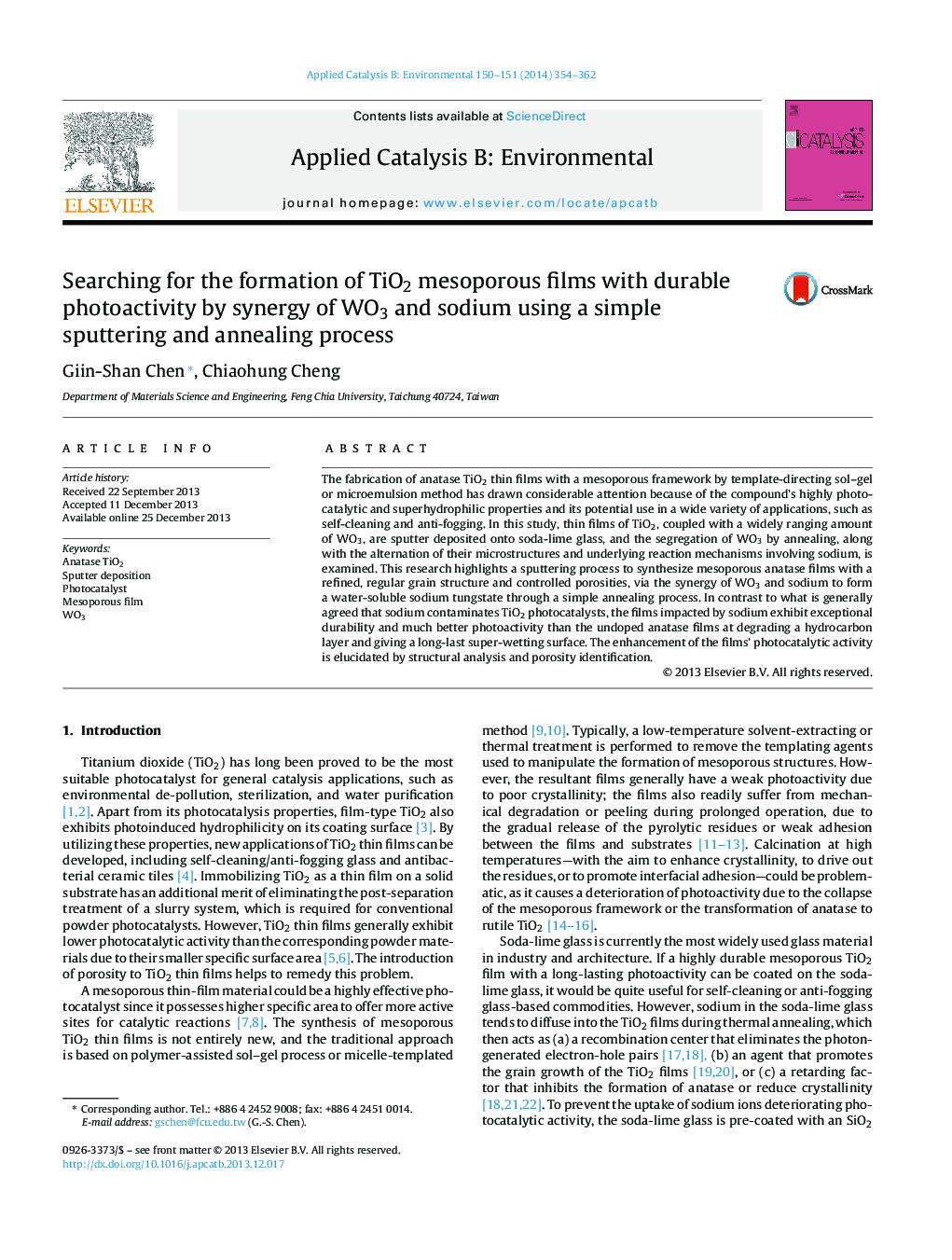| Article ID | Journal | Published Year | Pages | File Type |
|---|---|---|---|---|
| 45940 | Applied Catalysis B: Environmental | 2014 | 9 Pages |
•TiO2 thin films incorporated with a widely ranging amount of WO3 were sputter deposited on soda-lime glass.•Details of microstructure and phase transformations upon oxygen annealing were examined.•The interplay between WO3 and sodium is to alter the phase-transition behavior and grain structure of the films.•Ultimately a new process to fabricate anatase TiO2 mesoporous films with enhanced and durable photoactivity is developed.
The fabrication of anatase TiO2 thin films with a mesoporous framework by template-directing sol–gel or microemulsion method has drawn considerable attention because of the compound's highly photocatalytic and superhydrophilic properties and its potential use in a wide variety of applications, such as self-cleaning and anti-fogging. In this study, thin films of TiO2, coupled with a widely ranging amount of WO3, are sputter deposited onto soda-lime glass, and the segregation of WO3 by annealing, along with the alternation of their microstructures and underlying reaction mechanisms involving sodium, is examined. This research highlights a sputtering process to synthesize mesoporous anatase films with a refined, regular grain structure and controlled porosities, via the synergy of WO3 and sodium to form a water-soluble sodium tungstate through a simple annealing process. In contrast to what is generally agreed that sodium contaminates TiO2 photocatalysts, the films impacted by sodium exhibit exceptional durability and much better photoactivity than the undoped anatase films at degrading a hydrocarbon layer and giving a long-last super-wetting surface. The enhancement of the films’ photocatalytic activity is elucidated by structural analysis and porosity identification.
Graphical abstractFigure optionsDownload full-size imageDownload as PowerPoint slide
